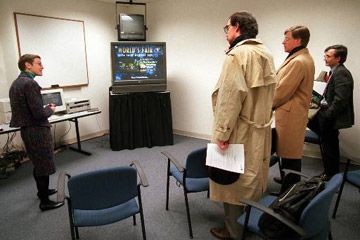The biggest difference between the two systems is that 1080i actually exists and 780i doesn’t. Don’t worry -- it’s a common mistake that many people make. The two main high-definition (HD) resolutions are 720p and 1080i.
The 720p format displays 720 horizontal lines at the same time, 60 times a second, which results in a progressive image display (that’s how the “p” got added). In contrast, the 1080i only throws up 540 of its lines at a time (that’s half its total lines). The 1080i broadcast first shows the 540 even lines, then the 540 odd lines, which results in an interlaced picture refreshing 30 times a second (“interlace” is why they added the “i” here). So the question becomes for both broadcasters and television buyers -- which HD format is better? Of course, the answer is “it depends.”
Advertisement
From a buyer’s perspective, manufacturers may be making the decision for you. You can still buy 720p television models, but they are being phased out in favor of the newer 1080p models (the 1080i models are still around as well). However, you can still find them and some test results show that if you’re buying a television smaller than 50 inches, you won’t be able to tell the difference in resolution between 720p and the other HD formats. Since the 720p models tend to be the less expensive ones, you should do fine then with a smaller television size (since 50 inches is now a small television!).
From a broadcaster’s perspective, they’ve often decided between broadcasting in 720p or 1080i based on their content. The faster the speed of the content being broadcast, say a sports event, the better it appears in 720p. However, most television is shot at 24 frames per second (sports are usually closer to 60 frames per second), so 1080i provides a better picture.
Advertisement



